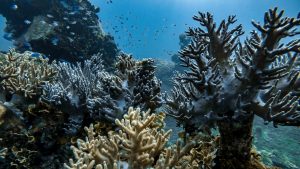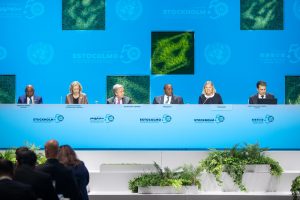- SIWI – Leading expert in water governance
- /
- Latest
- /
- Capacity building is key to increasing water infrastructure investments in Africa
Capacity building is key to increasing water infrastructure investments in Africa

In light of the Covid-19 pandemic the importance of clean water and hygiene facilities are highlighted worldwide several times a day in all media. Nevertheless, in Africa only one quarter of the population have safe water supply at home, making it a luxury most do not yet have access to. More than half of the population lack access to improved sanitation.
The full impact of the ongoing spread of the Coronavirus on the continent is yet to be seen. Clearly the lockdowns implemented by many countries will aggravate poverty and increase socio-economic differences in society. There are numerous strategic support and structural needs at multiple levels of scale that must be addressed in order to get back on track again.
One of the most important needs and a shortcut to catalyse development is to invest in water infrastructure. WHO estimates that for each US dollar invested in water supply and sanitation, the return is three to 34 US dollars with investments in water infrastructure also being a direct way out of poverty.
For Africa to achieve the Sustainable Development Goals for water and sanitation (universal and equitable access to safe and affordable drinking water, and to adequate and equitable sanitation and hygiene, by 2030) will require consistent investments in water infrastructure, operations and maintenance, efficient management of water resources, and strengthened policy and regulatory frameworks. The overall annual economic loss due to lack of access to safe water and sanitation in Africa is equal to 5 per cent of GDP. Current annual investment levels would need to double in order to meet the needs by 2030.
However, raising funds for investments is not enough. There must be a trusted, well established project implementer with sufficient technical expertise, and a high degree of transparency and robust financial and administrative capacity, that can receive allocated funds and transfer them to effective project implementation. The key word here is capacity. Currently, lack of capacity in the above-mentioned fields inhibits international funding agencies from allocating existing funds since the risk of failure of the investments is too high.
To help project planners work more efficiently with capacity building, SIWI has released a new report, Capacity-building needs assessment to enhance financing for water infrastructure projects in Africa. The report draws on experiences from the recently completed Africa EU Water Partnership Programme (AEWPP), implemented by SIWI with support from the African Ministerial Council on Water (AMCOW).
AEWPP has identified several promising emerging water infrastructure projects, mostly on transboundary water resources, that aim to improve access to water for water supply and sanitation, and/or for food production, hydropower and industrial/tourism purposes. An important lesson was, however, that all the identified projects needed improved capacity to be successful. The project sponsors (various governmental departments, agencies, or commissions) would benefit from different types of capacity building in order to move closer to producing bankable projects.
The new report outlines some of these capacity building needs. We encourage any part of the international development community, in search for bankable projects, to use this as an entry point for identification of potential receivers of ODA or as partners of innovative funding solutions. The need for capacity building is clear and acknowledged also by other actors such as to WASH funders, a civil society organization. Significant and meaningful investments in capacity building are needed from funders and implementers, in parallel with hardware investments. Capacity building is a fundamental part of development that does not take funds away from tangible results, but rather helps achieve targets and maintain outcomes. However, capacity building is too often treated like a minor add-on to an infrastructure project, thought of as an added cost, or not budgeted or planned for until partway through a project when the gap in capacity becomes glaringly apparent.
WASH funders lists five key benefits of investing in capacity building that should motivate donors and investors to ensure that capacity building is a significant part of any initiative they are supporting: 1) SDG Water targets are not achievable with current human resources – the human capacity gap is too wide; 2) Capacity building increases the quality of implementation; 3) Capacity building makes interventions more sustainable; 4) Capacity building can reach the hardest to reach; 5) Capacity building addresses the gender gap.
The AEWPP helped raise awareness of the gap between available funds and promising water infrastructure projects. However, the challenges related to access to safe water of good quality in Africa are immense and growing. This work needs to be carried forward with retained persistence to meet future demands.








